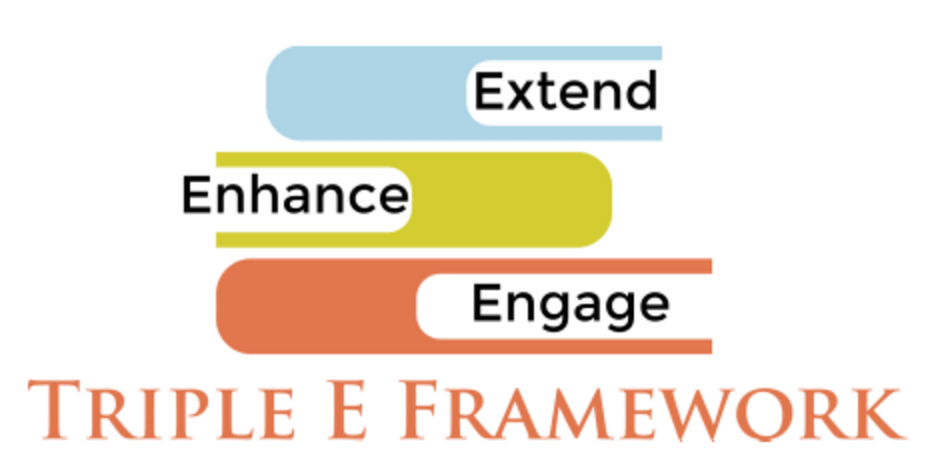You are using technology in your class, but how effective is it? Here is a short self-evaluation to see how you are doing.
Keep track of your score, and add up the numbers at the end.
###
The Triple E Framework
In order to determine if technology is having a positive impact on student learning goals, the following assessment survey can be used to analyze a lesson or unit that integrates technology in the classroom. http://tripleEframework.com
===
Engagement
Engagement is the most basic level of technology integration. Often by putting a piece of technology in front of the students or in their hands, they become interested or “engaged” in the activity. However, we can look a little more deeply at engagement by considering if the technology is not just capturing the interest of the student, but if it is actually engaging them in the content (not just the bells and whistles of the software). Below are three measurement questions to ask when looking for engagement in learning goals through a technology tool.
- What are you evaluating?
- Does the technology tool help students focus on the learning goals (content) with less distraction(s)? 0-2 (0=No 2=Absolutely)
- Does the technology tool help to motivate students to begin the learning processes? 0-2 (0=No 2=Absolutely)
- Does the technology cause a shift in the behavior of the students, where they move from passive to active learners? 0-2 (0=No 2=Absolutely)
Enhancement
If the technology is able to provide supports that help to scaffold or personalize learning, where these scaffolds are better options than traditional forms of learning than the technology is enhancing the learning goals. In order to measure for enhancement, the following questions can be used for analysis.
- Does the technology tool aid students in developing a more sophisticated understanding of the content? 0-2 (0=No 2=Absolutely)
- Does the technology create scaffolds to make it easier to understand concepts or ideas? 0-2 (0=No 2=Absolutely)
- Does the technology create paths for students to demonstrate their understanding of the learning goals in a way that they could not do with traditional tools? 0-2 (0=No 2=Absolutely)
Extension
If technology can somehow aid or enhance the ability to create these real-world connections, then learning is being extended outside of the classroom walls and into student’s everyday lives. In addition, another piece of extension are non-content related skills. In the digital age, educators are also looking to help their students to start developing the 21st Century skills, such as grit and P21 skills, that many employers are asking for. In order to measure if technology tools are extending learning goals, the following questions can be used for analysis.
- Does the technology create opportunities for students to learn outside of their typical school day? 0-2 (0=No 2=Absolutely)
- Does the technology create a bridge between school learning and their everyday life experiences? 0-2 (0=No 2=Absolutely)
- Does the technology allow students to build grit skills, that they can use in their everyday lives? 0-2 (0=No 2=Absolutely)
Reading Results:
- 14-18 Points=Exceptional connection between technology and learning goals
- 10-13 Points=Strong connection between technology and learning goals
- 7-9 Points=Average connection of technology with learning goals (re-evaluate to make certain that technology is enhancing and/or extending the learning goals in some significant way)
- 6 Points or below=Low connection between technology and learning goals (possibly rethink if technology should be used at all)
